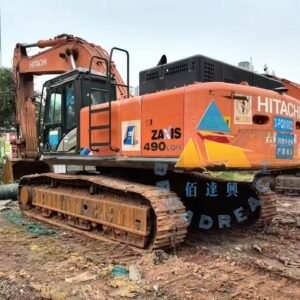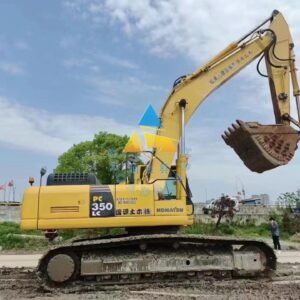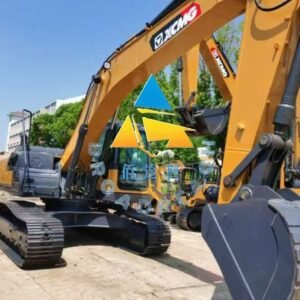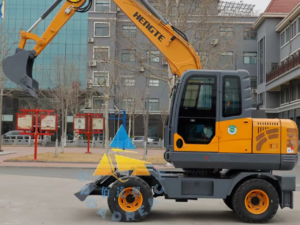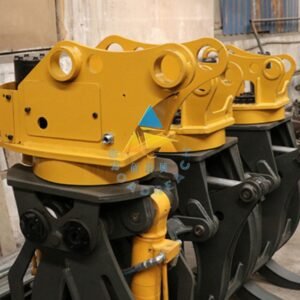BroadReach Construction Machinery Co., Ltd

Quick Tips for Properly Sizing Excavators: A Friendly Guide
When it comes to choosing the right excavator for your project, size matters—literally! Getting the correct size can make a huge difference in the efficiency, safety, and cost of your job. But don’t worry! We’ve got you covered with some quick, easy-to-follow tips to help you pick the perfect excavator size for your needs.
Table of Contents
1. Understand Your Project’s Scope
The first step in sizing an excavator is to fully understand the nature and scope of the project you’re working on. Consider the type of work you need to do. Is it digging trenches, demolition, landscaping, or heavy lifting? Larger projects like road construction will require bigger machines, while smaller tasks like residential landscaping can often be handled with a more compact model.
- Large-scale projects: Choose a larger excavator for greater reach, lifting capacity, and digging depth.
- Smaller projects: A mini or midi excavator could be ideal for tighter spaces and lighter tasks.
2. Match the Excavator’s Reach and Digging Depth to the Job
Excavators come in different sizes, and each size has a specific digging depth and reach. Before you choose an excavator, consider how deep or wide you need to dig.
- Digging depth: If you need to dig deep trenches, you’ll need a larger excavator with a longer arm.
- Reach: For jobs that require extending the arm to access hard-to-reach areas, a model with a long reach might be necessary.
Check the specifications of the machine to ensure it meets the needs of your project.
3. Consider the Weight of the Materials You’re Moving
Different excavators have different lifting capacities, which means some are better suited for heavier loads. If your project involves moving heavy materials like rocks, debris, or large amounts of dirt, you’ll need an excavator that can handle the weight. Overloading a smaller machine could not only damage the equipment but also pose safety risks.
- Lightweight materials: A smaller excavator might suffice.
- Heavy lifting: Go for a larger model with higher lifting capacity.
4. Think About Terrain and Access
Where will you be working? The type of terrain you’re dealing with can significantly impact the size of the excavator you need. If you’re working in tight or uneven spaces, you might need a more compact machine that can maneuver easily.
- Uneven or rough terrain: You might need a larger machine with better stability.
- Confined spaces: Consider a mini or midi excavator, which can navigate through narrow spaces more easily.
5. Ease of Transportation
Larger excavators are more powerful but also more challenging to transport. If you’re moving your excavator from one job site to another, consider the size of the machine in relation to your transportation options. Some bigger machines may require special transport arrangements.
- Smaller machines: Easier to transport, so they might be the best choice for multiple job sites.
- Larger machines: More costly and complex to move but necessary for big jobs.
6. Keep in Mind Fuel Efficiency
Larger excavators often consume more fuel, so it’s important to balance power with fuel efficiency. If your project is long-term, fuel costs can add up. For smaller projects, using a smaller excavator that’s more fuel-efficient could be a smart move.
- Small to medium jobs: A smaller, more fuel-efficient excavator will save you money.
- Large projects: You may need the power of a larger excavator, even if it’s less fuel-efficient, because it gets the job done faster.
7. Budget and Cost
The cost of an excavator varies greatly depending on size. While it’s tempting to go for the biggest option, keep in mind that bigger machines come with higher purchase or rental costs and can result in greater maintenance and operation expenses.
- Smaller machines: Cost less to buy or rent and are often cheaper to maintain.
- Larger machines: Higher initial and operating costs but are needed for large-scale work.
8. Look for Versatility
If you’re working on multiple projects or your scope might change, consider an excavator that offers versatility. Some models allow you to swap attachments (like buckets, breakers, and grapples), which can help you get more work done with the same machine, saving you time and money.
- Multiple projects: A versatile model could be more cost-effective in the long run.
In Conclusion:
Properly sizing your excavator is key to maximizing efficiency, safety, and cost savings on your projects. By understanding the scope of your work, the materials you’re moving, and the terrain you’re working in, you can select the best machine for the job. Take your time, evaluate your needs, and you’ll end up with the perfect excavator to help you get the job done!

